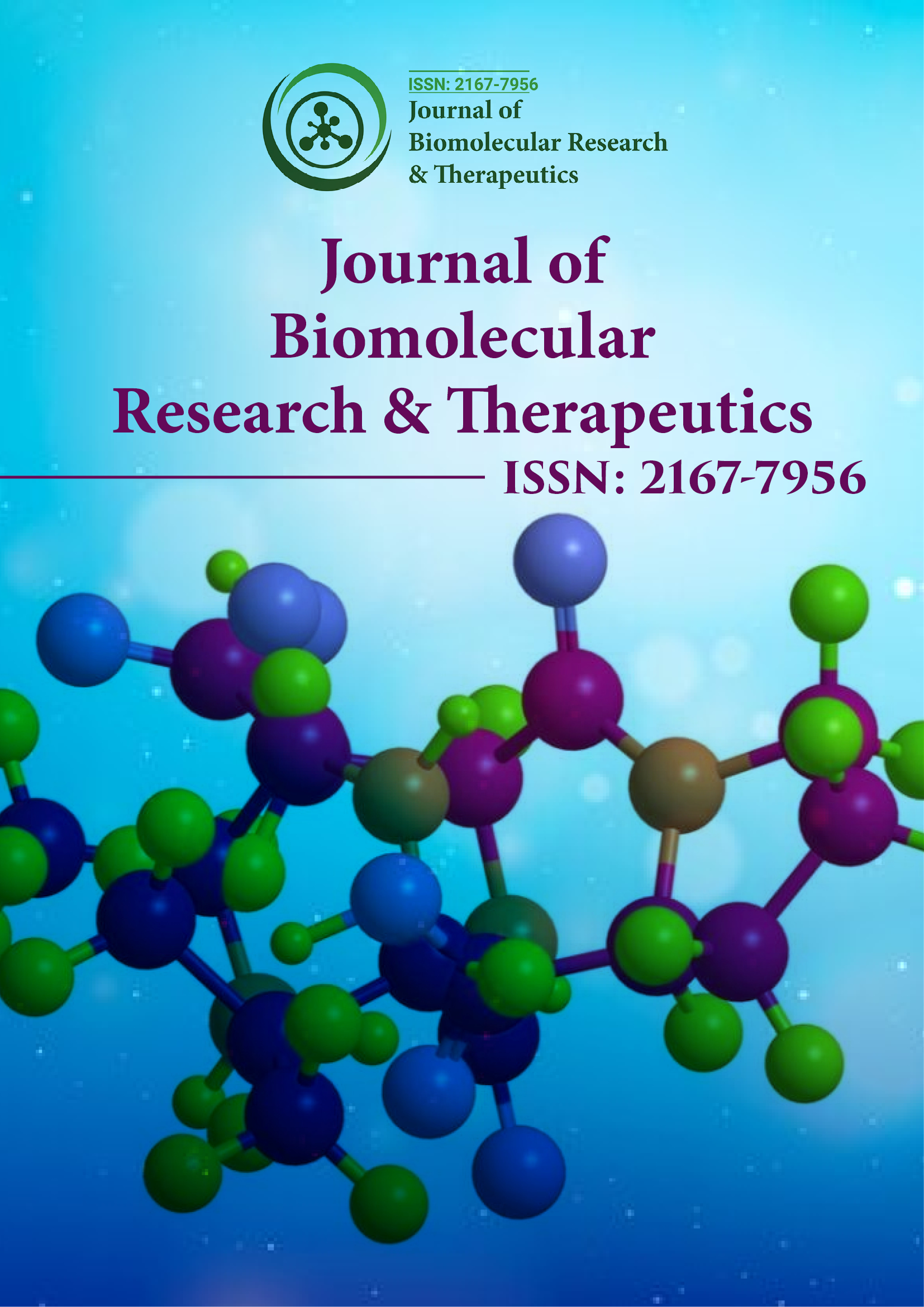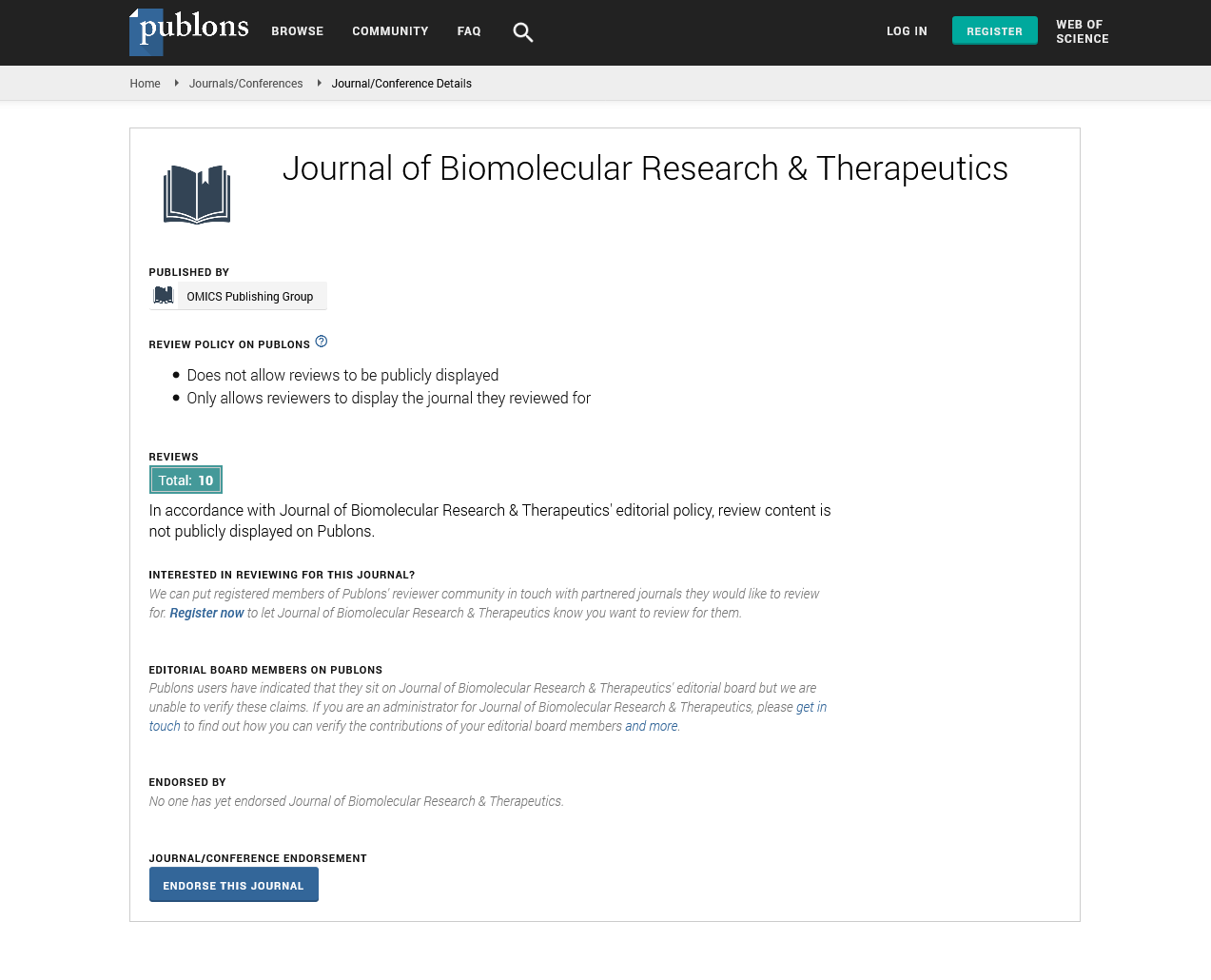Indexed In
- Open J Gate
- Genamics JournalSeek
- ResearchBible
- Electronic Journals Library
- RefSeek
- Hamdard University
- EBSCO A-Z
- OCLC- WorldCat
- SWB online catalog
- Virtual Library of Biology (vifabio)
- Publons
- Euro Pub
- Google Scholar
Useful Links
Share This Page
Journal Flyer

Open Access Journals
- Agri and Aquaculture
- Biochemistry
- Bioinformatics & Systems Biology
- Business & Management
- Chemistry
- Clinical Sciences
- Engineering
- Food & Nutrition
- General Science
- Genetics & Molecular Biology
- Immunology & Microbiology
- Medical Sciences
- Neuroscience & Psychology
- Nursing & Health Care
- Pharmaceutical Sciences
Perspective - (2024) Volume 13, Issue 5
Multidrug Efflux and the Biomolecular Complex: Physics of Drug Resistance
Satoshi Mishima*Received: 30-Sep-2024, Manuscript No. BOM-24-27795; Editor assigned: 02-Oct-2024, Pre QC No. BOM-24-27795 (PQ); Reviewed: 16-Oct-2024, QC No. BOM-24-27795; Revised: 23-Oct-2024, Manuscript No. BOM-24-27795 (R); Published: 30-Oct-2024, DOI: 10.35248/2167-7956.24.13.412
Description
Multidrug Resistance (MDR) is a significant challenge in modern medicine, particularly in treating cancer, bacterial infections and other chronic diseases. MDR occurs when cells, such as bacteria or cancer cells, develop resistance to multiple drugs through specialized membrane proteins that actively transport therapeutic agents out of the cell. This process, known as multidrug efflux, is mediated by efflux pumps, membrane bound transporters that reduce the intracellular concentration of drugs, rendering them less effective. Understanding the physics behind this efflux process, especially through the biomolecular complex of the efflux pump, is essential for designing effective therapies to overcome MDR.
Efflux pumps belong to families like ATP-Binding Cassette (ABC) transporters and Major Facilitator Superfamily (MFS) transporters. These proteins are present in the membranes of many cells, including bacterial and human cells and expel toxic substances, including therapeutic drugs. In multidrug resistance, these pumps recognize and expel a variety of therapeutic agents, such as antibiotics, anticancer drugs and small molecules, contributing to the reduced effectiveness of these drugs.
On a molecular level, efflux pumps operate as biomolecular complexes that actively translocate drugs across the cell membrane. The process begins when a drug binds to the efflux pump, followed by a conformational change in the protein that enables the drug's transport out of the cell. The energy required for this process varies by efflux pump type. For ABC transporters, ATP hydrolysis provides the energy, while MFS transporters use the electrochemical gradient of protons or sodium ions across the membrane. Unlike passive diffusion, which depends on concentration gradients, efflux is an active, energy-consuming mechanism.
The physics of drug efflux involves key principles like molecular recognition, conformational changes and energy utilization for transport. Initially, the efflux pump must recognize and bind to the drug, which depends on interactions like van der Waals forces, hydrogen bonding and electrostatic interactions. The specificity of the pump for a variety of drugs is determined by its unique structure, which accommodates different substrates.
Once bound, the efflux pump undergoes a conformational change, which is essential for drug transport. This conformational shift is driven by ATP hydrolysis in ABC transporters or ion gradients in MFS transporters. These molecular changes adhere to principles of thermodynamics and kinetics, with the pump overcoming the hydrophobic barrier of the cell membrane. The pump's conformational change creates a hydrophilic pathway, allowing the drug to be expelled from the cell.
The efficiency of drug efflux is influenced not only by the efflux pump's properties but also by the biophysical characteristics of the cell membrane. The lipid bilayer of the membrane serves as a barrier to the drug and the efflux pump must generate enough force to overcome this barrier. The physics of membrane transport, such as membrane fluidity and interactions between the pump and lipid components, plays a significant role in efflux efficiency. Membrane proteins that interact with the efflux pumps can either enhance or inhibit their function, influencing the overall drug resistance.
An interesting aspect of multidrug efflux is the synergy between different efflux pumps. Cells often express multiple types of efflux pumps, each with varying substrate specificities. The cooperation between these pumps enables more efficient expulsion of a broad range of drugs, complicating efforts to combat MDR. This synergy can be explained through principles of cooperative binding and dynamic interactions between pumps, which may share components or signaling pathways that regulate their activity.
From a therapeutic perspective, overcoming multidrug efflux is important in combating drug resistance. Researchers are exploring several strategies to inhibit efflux pump function, such as developing small molecules to block pump activity or designing drugs less susceptible to efflux. One approach targets the energy source of efflux pumps, such as inhibiting ATP hydrolysis in ABC transporters or disrupting ion gradients in MFS transporters. Another strategy involves modifying drugs to reduce their affinity for the efflux pumps’ binding sites, making them less recognizable. However, these strategies are still in the early stages of development and face challenges due to the complex and adaptive nature of the efflux process.
In conclusion, the physics of multidrug efflux through biomolecular complexes is a multifaceted process central to the development of multidrug resistance. Understanding molecular interactions, conformational changes and energy requirements is important for developing strategies to counter drug resistance. As research progresses, new approaches may emerge to effectively target these efflux mechanisms, improving existing therapies and addressing the growing problem of multidrug resistance.
Citation: Mishima S (2024). Multidrug Efflux and the Biomolecular Complex: Physics of Drug Resistance. J Biomol Res Ther. 13:412.
Copyright: © 2024 Mishima S. This is an open-access article distributed under the terms of the Creative Commons Attribution License, which permits unrestricted use, distribution, and reproduction in any medium, provided the original author and source are credited.

